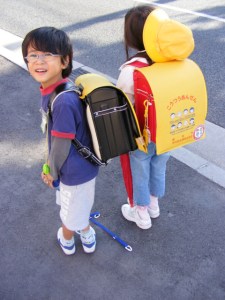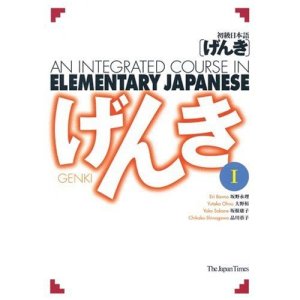
Elementary children wearing their school outfits
To those who have taken some Japanese and are about to embark on their first trip to Japan, you may be wondering how people there will perceive you as you stumble around trying to form a sentence. Perhaps your limit is ねこがいます and even then your accent shows through your efforts. “Are they going to look down on me,” you may wonder. Fear not. Many are very understanding. Why? They believe that Japanese is a difficult language for foreigners to learn.
Even if you entered a room and introduced yourself like, “koNIchuuWAAH, waTAshi WA James deSU!” They’ll smile, recognize that you tried and may even compliment you with a “じょうず!すごいですね!” But in reality, you know that it was awful and the compliments end up being overly endearing rather than ego boosting like they want it to be. So, it all ends with, “Do they think of me as a 5 year old Japanese child?”
Well, no. Many honestly believe that by complimenting every effort you make into learning Japanese will make you feel better about yourself. It’s not a problem of whether they view you as someone speaking at a Japanese child’s level. They see you as a foreigner that is learning Japanese. Simple as that. However, the Japanese only compliment you when they first hear you speak Japanese or notice an improvement. The biggest problem for learners is not having their Japanese corrected.
If you were to say ねこがあります instead of ねこがいます in conversation, for example, they perfectly understand what you meant to say and move on with the conversation. Even though the sentence is grammatically incorrect, they take it as nothing. Why not fix it for you though so you can improve next time? Well, to them, that would be embarrassing to point out a mistake. They definitely don’t want to embarrass their guest. Plus, if you make a mistake in every sentence, they’ll get tired of correcting all the mistakes you make.
The best way to remedy this is tho let them know you want to be corrected when you first introduce yourself. If you haven’t already, any time is a good time to let them know. Just tell them, “ぶんしょうはちがったら、なおしてください” (文章は違ったら、直してください) and they’ll understand.
Because you are a foreigner, not a Japanese child, you are almost excluded from the rules of Japanese society. As long as you don’t bring too much attention to yourself, obey the Japanese laws, and aren’t too overbearing. So this brings in the topic of casual speech and formal speech (丁寧-ていねい). The way it is done usually is when strangers talk to each other or first meet, they use keigo (警護). For those who haven’t learned yet, keigo is the super formal language. When one refers to oneself, it’s humble. When referring to the other person it’s honorific. However, keigo is considered to be difficult even for the Japanese. As a foreigner you’re expected to use formal speech, ていねい.
You’ll notice, though, that they’ll respond to you in casual speech, which is just dictionary form of verbs. Does this mean you should respond the same? This is hard, because, again they won’t correct you when you’re learning Japanese. If you reply casually, they’ll just take it as that. Normally, a casual reply would be considered rude. But they let it slide just for you. If you continue in ていねい, they may never tell you to switch to casual because they’re assuming that’s how you’re learning Japanese and it’s not their business to fix it. What to do?
Again, communication. Ask them what feels most comfortable when talking to you. Or ask them for a general situation. “一般的に、丁寧で話したほうがいいですか?”(いっぱんてきに、ていねいで はなしたほうが いいですか?) I’m guessing that the first friends you make are ones that already know some English. So don’t worry too much about sentences in Japanese.
Finally, you are a foreigner!!! I can’t stress it enough. No matter how good your Japanese is, you will always be a foreigner. You will never be Japanese. Even if you married a Japanese person, live in a Japanese home, have a job in Japan, have half Japanese children, you’ll forever be a foreigner. (I guess the only exception is if you’re of full Asian descent, that brings you a bit closer. There’s problems within that too though.) However, the main point is that because you’re a foreigner you’re not always expected to live by the rules of Japanese society. That has good points and bad points. But to answer the ultimate question of this article, you won’t be viewed as a Japanese child, because you’re not Japanese! You’re just foreign, and that’s that.



